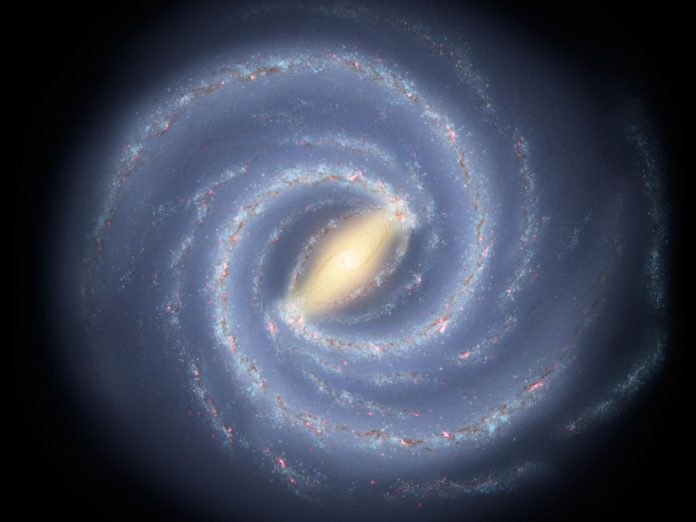The rotating stars in our galaxy are puzzling as same as our milky way. Various scientists have suggested that the orbital speeds of stars should decrease with their distance from the center of the galaxy.
But, in reality, the stars in the middle and outer regions of the galaxies, have same rotational speed. This may be due to the gravitational effect of dark matter that we can’t see.
Dark matter is the hypothetical form of matter, for which scientists are seeking to unravel its mysteries. Now, keeping this in mind, physicists including Dmitri Ryutov, Dmitry Budker, and Victor Flambaum have suggested that the rotational dynamics of galaxies might be explained by other factors.
According to them, the mass of photons, which are particles of light is responsible for the rotational dynamics of galaxies.
While visiting Johannes Gutenberg University Mainz (JGU), Ryutov, his host Professor Dmitry Budker of the Helmholtz Institute Mainz (HIM), and Professor Victor Flambaum, Fellow of the Gutenberg Research College of Mainz University, decided to take a closer look at the idea. They were interested in how the infinitesimally small mass of the photon could influence massive galaxies.
The mechanism at the core of the physicists’ assumption is a consequence of what is known as Maxwell-Proca equations. These would allow additional centripetal forces to be generated as a result of the electromagnetic stresses in a galaxy.
Dmitry Budker said, “The hypothetical effect we are investigating is not the result of increased gravity. This effect may occur concurrently with the assumed influence of dark matter. It may even – under certain circumstances – eliminate the need to evoke dark matter as a factor when it comes to explaining rotation curves. Rotation curves express the relationship between the orbital speeds of stars in a galaxy and their radial distance from the galaxy’s center.”

“By assuming a certain photon mass, much smaller than the current upper limit, we can show that this mass would be sufficient to generate additional forces in a galaxy and that these forces would be roughly large enough to explain the rotation curves. This conclusion is extremely exciting.”
Physicists went further and observed how protostars form and discovered that their hypothesis has other implications. They found that long-lived, relatively lightweight stars, such as our sun, would have highly elliptical orbits.
Budker said, “Actual observations clearly don’t agree with this prediction, meaning our theory can’t explain everything. Proca-force effects can thus only be responsible for some of the anomalies in the rotation curves. We don’t currently consider photon mass to be the solution to the rotation-curve problem. But it could be part of the solution. However, we need to keep an open mind as long as we do not actually know what dark matter is.”
